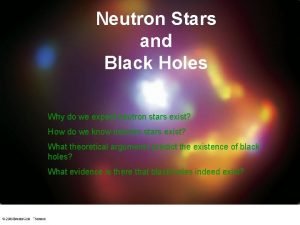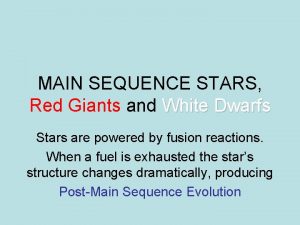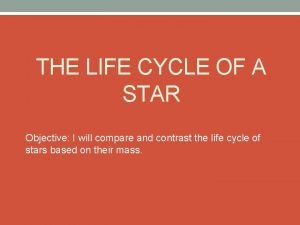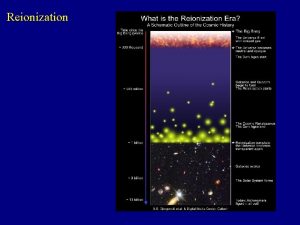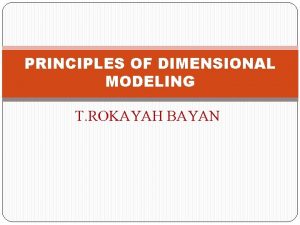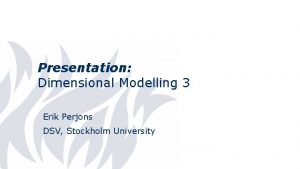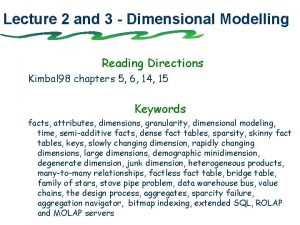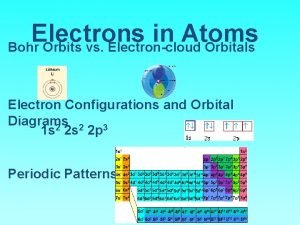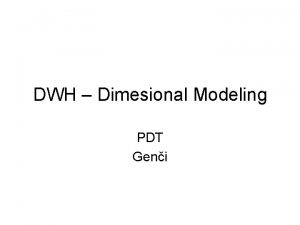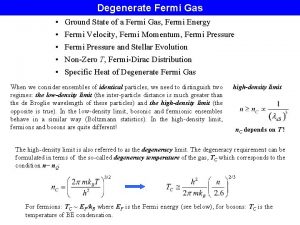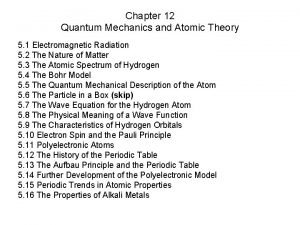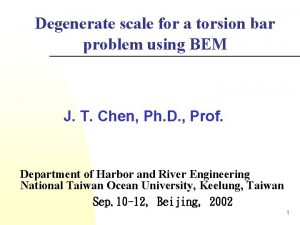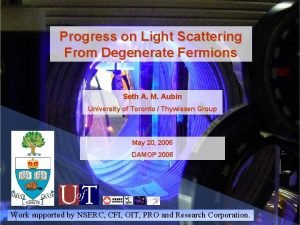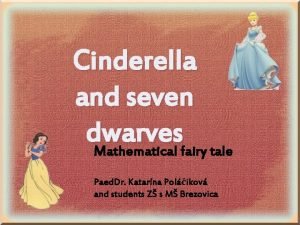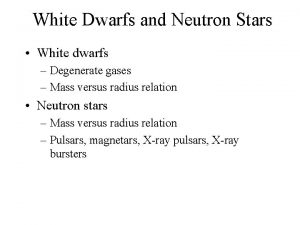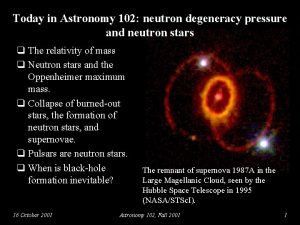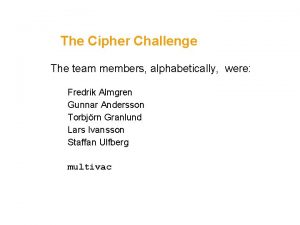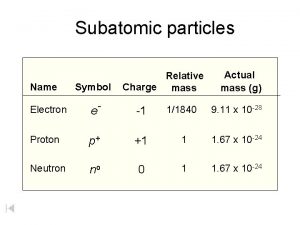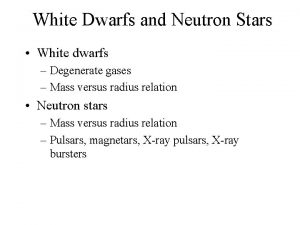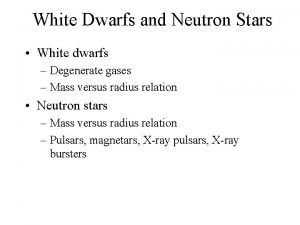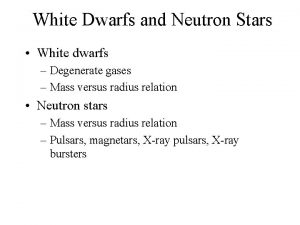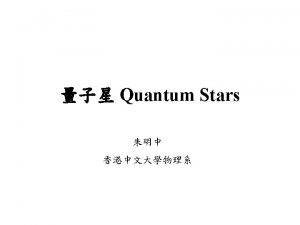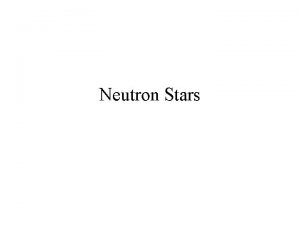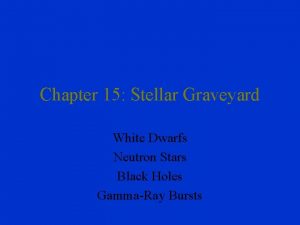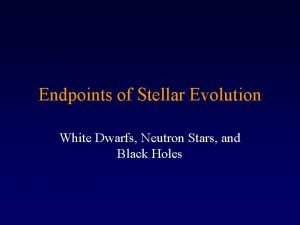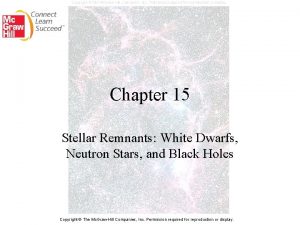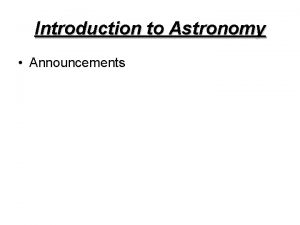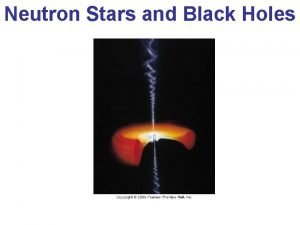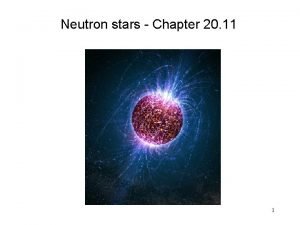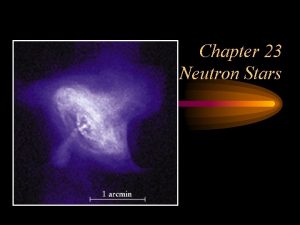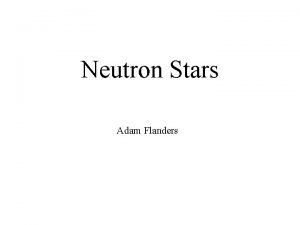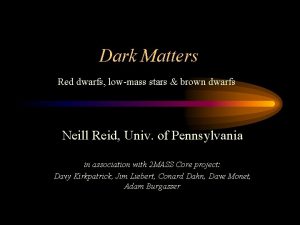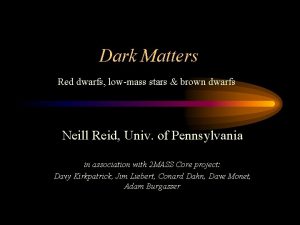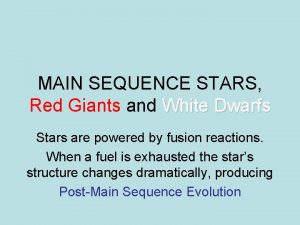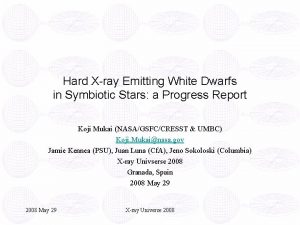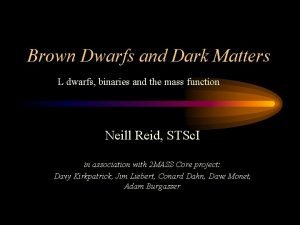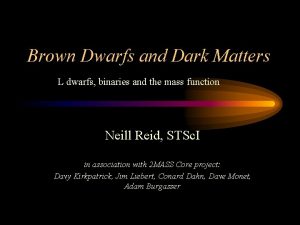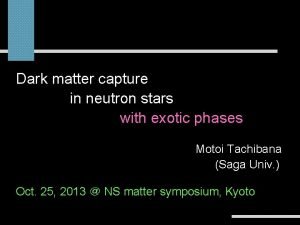White Dwarfs and Neutron Stars White dwarfs Degenerate


























- Slides: 26

White Dwarfs and Neutron Stars • White dwarfs – Degenerate gases – Mass versus radius relation • Neutron stars – Mass versus radius relation – Pulsars, magnetars, X-ray pulsars, X-ray bursters

White dwarf • Core of solar mass star • Degenerate gas of oxygen and carbon • No energy from fusion or gravitational contraction

Mass versus radius relation • For objects made of normal matter, radius tends to increase with mass

Mass/radius relation for degenerate star • Star mass = M, radius = R • Gravitational potential energy = • Heisenberg uncertainty: • Electron density • Kinetic energy

Mass/radius relation for degenerate star • Total energy • Find R by minimizing E • Radius decreases as mass increases

Mass versus radius relation

Maximum white dwarf mass • As mass increases, electron speed c, kinetic energy equation E=pc • Electron degeneracy cannot support a white dwarf heavier than 1. 4 solar masses, the “Chandrasekhar limit”.

What happens to a star more massive than 1. 4 solar masses? 1. 2. 3. 4. There aren’t any They shrink to zero size They explode They become something else

Neutron Stars • Degenerate stars heavier than 1. 4 solar masses collapse to become neutron stars • Formed in supernova explosions • Electrons are not separate – Combine with nuclei to form neutrons • Neutron stars are degenerate gas of neutrons

Neutron energy levels • Only two neutrons (one up, one down) can go into each energy level. • In a degenerate gas, all low energy levels are filled. • Neutrons have energy, and therefore are in motion and exert pressure even if temperature is zero. • Neutron star are supported by neutron degeneracy.

20 Mass v Radius 15 10 5

Neutron Stars • Very compact – about 10 km radius • Very dense – one teaspoon of neutron star material weighs as much as all the buildings in Manhattan • Spin rapidly – as fast as 600 times per second • High magnetic fields – compressed from magnetic field of progenitor star

Spin up of neutron star Collapse of star increases both spin and magnetic field

Angular momentum For single particle, angular momentum L = mvr Write in terms of rotation rate , v = 2 r , L = 2 mr 2 = I · 2 I = “moment of inertia” In general, I = #MR 2 M = mass of object R = length of object

Spin up of neutron star Angular momentum of sphere: Where M is mass, R is radius, is spin rate If the Sun (spin rate 1/25 days, radius 7 108 m) were to collapse to a neutron star with a radius of 12 km, how fast would it be spinning?

Spin up of neutron star Very high rotation rates can be reached simply via conservation of angular momentum. This is faster than any known (or possible) neutron star. Mass and angular momentum are lost during the collapse.

Pulsars Discovered by Jocelyn Bell in 1967. Her advisor, Anthony Hewish, won the Nobel Prize in Physics for the discovery in 1974.

Pulsars Energy source is spin down of neutron star. Must lie along pulsar beam to see pulsed signals.

Crab Pulsar

Spin down of a pulsar For Crab pulsar: = 30/s, M = 1. 4 solar masses, R = 12 km, and d /dt = – 3. 9 10 -10 s-2. Therefore, P = 5 1031 W = 130, 000 solar luminosities. Over a year, the spin rate changes by only 0. 04%.

Magnetars Magnetic fields so strong that they produce starquakes on the neutron star surface. These quakes produce huge flashes of X-rays and Gamma-rays. Energy source is magnetic field.

X-Ray Pulsars Neutron star in binary system with a normal star

X-Ray Pulsars High magnetic field neutron stars make regular pulsations. Energy source is gravitational energy of infalling matter.

X-ray Bursters

X-ray Burst Low magnetic field neutron stars make X-ray bursts. Source of energy is nuclear burning.

Review Questions • What is the exclusion principle? • Does a more massive white dwarf have a larger or smaller radius than a less massive one? • What is the maximum mass of a white dwarf? • What are some of the properties of neutron stars? • Why do many neutron stars spin rapidly? • In what different forms does one find neutron stars?
 Anatomy of a star
Anatomy of a star Snow white and the seven dwarfs gender roles
Snow white and the seven dwarfs gender roles Seven dwarfs once upon a time
Seven dwarfs once upon a time Semi detached
Semi detached There are millions of stars in the space
There are millions of stars in the space Star objective
Star objective Degenerate era of the universe
Degenerate era of the universe Dimensional modeling basics
Dimensional modeling basics Degenerate dimension
Degenerate dimension Degenerate dimension
Degenerate dimension Full orbital diagram for he
Full orbital diagram for he Degenerate dimensions
Degenerate dimensions Types of fact tables
Types of fact tables Degenerate electron gas
Degenerate electron gas Degenerate orbitals
Degenerate orbitals Degenerate bar
Degenerate bar Pauli blocking of light scattering in degenerate fermions
Pauli blocking of light scattering in degenerate fermions Degenerate state
Degenerate state Degenerate state
Degenerate state How many dwarfs in cinderella
How many dwarfs in cinderella Star kinds
Star kinds Isis neutron and muon source
Isis neutron and muon source Neutron degeneracy pressure
Neutron degeneracy pressure Neutron degeneracy
Neutron degeneracy Cipher neutron
Cipher neutron Neutron particle symbol
Neutron particle symbol Candela y neutron
Candela y neutron
